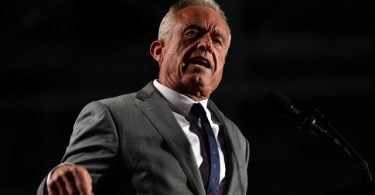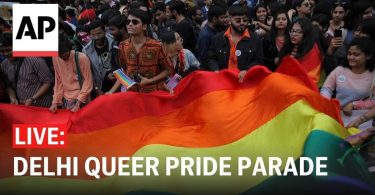Almost half of books challenged at school are returned to shelves, but titles with LGBTQ characters, themes and stories are most likely to be banned, according to a Washington Post analysis of nearly 900 book objections nationwide.
School officials sent 49 percent of challenged titles back to shelves, The Post found, a discovery some interviewed for this story hailed as proof the national alarm over book challenges has been overblown — although librarians warned of a severe burden on employees forced to spend months defending titles. The next most-common outcome, in 17 percent of challenges, was for a book to be placed under some form of restriction. Libraries might require parental permission or limit the youngest students from checking out a given title.
And school officials permanently removed 16 percent of challenged books, making that the third-most-common outcome. In the remaining cases, the books were either still under review as of late 2023, were never reviewed by the district or were unavailable before the challenge.
The Post requested the results of all book challenges filed in the 2021-2022 school year from more than 100 school districts, which The Post had previously identified as fielding formal objections during that time. In total, officials in those districts shared the outcomes of 872 challenges to 444 books across 29 states.
The Post analyzed the types of books challenged to determine what titles were most likely to be removed, restricted or retained. Books about lesbian, gay, bisexual, transgender and queer lives were 30 percent more likely to be yanked, The Post found, compared with all targeted books. By contrast, books by and about people of color, or those about race and racism, were 20 percent more likelyto be kept available compared with all targeted books.
Almost half of challenged books were
kept available
Removed
Kept available
Restricted
access
LGBTQ books more likely to be removed
Removed
Kept available
Restricted
access
Books by and about people of color
more likely to be kept available
Removed
Kept available
Restricted
access
Note: “Other” includes books that were still under
review, never reviewed, or unavailable prior to the
challenge.
Source: Washington Post analysis of school district records.
HANNA ZAKHARENKO/THE WASHINGTON POST
Almost half of challenged books were kept
available
Kept available
Restricted
access
Removed
LGBTQ books more likely to be removed
Restricted
access
Removed
Kept available
Books by and about people of color more
likely to be kept available
Removed
Kept available
Restricted
access
Note: “Other” includes books that were still under review, never
reviewed, or unavailable prior to the challenge.
Source: Washington Post analysis of school district records.
HANNA ZAKHARENKO/THE WASHINGTON POST
Almost half of challenged books were kept available
Kept available
Removed
Restricted
access
LGBTQ books more likely to be removed
Restricted
access
Kept available
Removed
Books by and about people of color more likely to be kept available
Kept available
Removed
Restricted
access
Note: “Other” includes books that were still under review, never reviewed, or unavailable prior
to the challenge.
Source: Washington Post analysis of school district records.
HANNA ZAKHARENKO/THE WASHINGTON POST
Almost half of challenged books were kept available
Kept available
Removed
Restricted access
LGBTQ books more likely to be removed
Kept available
Removed
Restricted access
Books by and about people of color more likely to be kept available
Kept available
Removed
Restricted access
Note: “Other” includes books that were still under review, never reviewed, or unavailable prior to the challenge.
Source: Washington Post analysis of school district records.
HANNA ZAKHARENKO/THE WASHINGTON POST
Amid a national debate over what to teach about race, sex and gender, book challenges surged to historic highs in 2021 and 2022, according to the American Library Association, which has tracked such objections for more than two decades. But little has been done to analyze the effect of these challenges — although a 2023 report from the conservative-leaning American Enterprise Institute found that 74 percent of books PEN America tracked as “banned” in 2021-2022 remain available, per public schools’ online library catalogues. (PEN America, a free-speech advocacy group, acknowledges that it defines a ban as any action taken against a book, ranging from removal to diminished access.)
There is no reliable national data on the outcomes of challenges to titles at public libraries, said Shannon Oltmann, an associate professor of library science at the University of Kentucky. But, Oltmann said, she and a colleague have just received a federal grant to investigate that question. She called the rate of books placed back on school shelves “a really promising statistic.”
About this series and soaring book challenges in the U.S.
End of carousel
“That is most welcome news to hear,” she said, although she cautioned that book restrictions can function as bans. And she lamented the finding about LGBTQ books: “We know from research that reading about people different from themselves helps youth develop empathy, compassion and broader understanding.”
Others hailed The Post’s findings as evidence that school districts are appropriately taking into account parent, staff or student discomfort with books offered to children in libraries or classrooms.
“In a public system, challenges are appropriate, reviewing challenges is appropriate and, in some small number of cases, keeping those books out of circulation is probably appropriate,” said Robert Pondiscio, a senior fellow studying K-12 education at the American Enterprise Institute. “It sounds like the system is working as it should.”
In interviews, librarians across the country said they were heartened by the rate of returns — but cautioned that the success can come at a high cost. Defending books from challenges is equivalent to a “second full-time job,” said Martha Hickson, a New Jersey school librarian who fought attempts to ban five LGBTQ books in the 2021-2022 school year.
Hickson, 64, worked evenings and weekends to coordinate a defense of the titles, recruiting the help of community members, authors and free-speech advocacy groups, she said. She also faced down allegations that she was a pornographer and a pedophile, shouted by parents at school board meetings and written into the book challenges, which named her personally.
Although her school board ultimately voted to retain the five books, the experience damaged Hickson. She had a mental, physical and emotional breakdown in fall of 2021 and had to take a month off work. She is “barely going at this point” and worries for other librarians throughout America, she said.
“My mind and body could not withstand it,” she said. “To be publicly flogged, with nowhere to turn, but to still have to do your job and then another job defending books on top of it? I don’t know who can do it.”
Books returned, books restricted
In February 2022, the superintendent of Pennsylvania’s Warwick School District wrote a six-page letter to a parent explaining the district’s deliberations over “All American Boys,” a novel about a Black teenage boy and a White teenage boy who witness an instance of police brutality. The parent had alleged that the book was offensive and would strip children of their innocence.
Superintendent April Hershey wrote in her letter, obtained by The Post, that school officials sought the perspectives of teachers and students as they weighed the title. Educators reported that the book spurred “interaction, engagement and discussion,” and a student said she related to its characters, Hershey wrote.
Hershey wrote that the parent could opt their child out of reading the text — but that “your objection to this material or any materials ends with your own child(ren). Other families have the right and responsibility to determine what is acceptable for their own child(ren). … The book ‘All American Boys’ will remain.”
In many cases of book returns studied by The Post, administrators conducted thorough reviews. The reviews often involved weeks of discussion by committees of librarians, teachers, parents and sometimes students. The panels produced detailed arguments for keeping the titles. A committee in Iowa’s Urbandale Community School District, for instance, decided to retain “All Boys Aren’t Blue,” which chronicles growing up Black and queer in the South, in part because it “could create empathy for others who are different.”
And school officials in Washington’s Central Kitsap School District wrote that they would continue to offer Toni Morrison’s “The Bluest Eye” because it is well-written and “neither depicts nor describes pornography.” They quoted the Stanford Encyclopedia’s definition of pornography to make the point. “The book has literary value in its structure, voice and themes,” the Central Kitsap officials wrote, adding, “the committee unanimously recommends that The Bluest Eye remain.”
Lynette Alidon, a retired school librarian who until this May worked in Texas’s Katy Independent School District near Houston, said she had helped review five to seven books every year since the pandemic. The reconsiderations stemmed about equally from parent objections and from librarians’ requests to reevaluate books, she said. Alidon said every book review committee comprised five people, mostly librarians from across the district, and required at least five hours of labor a week in reading the titles and writing up reports.
She had mixed feelings about the process. Some of the books she disliked reading, she said, while others felt like a waste of time because they were clearly appropriate for students. Alidon said the majority of books she reviewed because of formal objections or internal reconsiderations stayed on the shelves — although The Post found that the Katy district banned two-thirds of the 18 books that drew formal challenges in the 2021-2022 school year.
“I do feel like sometimes we did catch something that shouldn’t have been available for elementary-schoolers,” Alidon said. “I can only think of one that I didn’t like: It had the f-bomb and I knew my students would flip out. Parents would flip out.”
Other school librarians called book reviews a morale-sapping distraction. Sheila Michaels, a school librarian in Missouri’s Nixa School District near Springfield, said she spent two years — starting in fall 2021 — working on 15 formal parental challenges to books. The objections required the formation of five committees.
She and a fellow librarian read or reread each of the 15 titles. Every book absorbed about 20 hours of her time over three weeks, as she studied the text, looked up professional commentary and reviewed the school’s selection policies. All that impinged on her ability to do the rest of her job — from book ordering to library events to book displays — and cut into her family time, she said.
“It was a mess. We weren’t equipped to handle it. No one is,” Michaels said. “I would describe those two years as a complete professional nightmare.”
She said most review committees, made up of administrators, community members, teachers and librarians, opted to limit access to titles. A Post analysis of the 2021-2022 book challenges in the Nixa district shows that 64 percent of the 28 objections ended with school officials mandating parents’ permission for a student to read the book.
Requiring parental sign-off is one of the two most common forms of book restriction, The Post found. The most common is limiting access to high-schoolers: That was the case in 46 percent of the 151 book restriction cases The Post tracked.Twenty-six percent of restricted titles were made available only with the permission of parents. Additionally, 9 percent were limited to middle-schoolers and above.
Nearly half of all restricted
books limited to high-schoolers
Share of restricted books by type of
restriction
Multiple restrictions
Middle school and up
Parent permission
High school and up
Note: “Other” includes books that are not allowed
to be taught, require parent notification, a content
warning, elementary school or up, or counseling only.
Source: Washington Post analysis of school district records.
HANNA ZAKHARENKO/THE WASHINGTON POST
Nearly half of all restricted books
limited to high-schoolers
Share of restricted books by type of restriction
Multiple restrictions
Middle school and up
Parent permission
High school and up
Note: “Other” includes books that are not allowed to be taught,
require parent notification, a content warning, elementary school
or up, or counseling only.
Source: Washington Post analysis of school district records.
HANNA ZAKHARENKO/THE WASHINGTON POST
Nearly half of all restricted books limited to
high-schoolers
Share of restricted books by type of restriction
Multiple restrictions
Parent permission
High school and up
Middle school and up
Note: “Other” includes books that are not allowed to be taught, require parent notification, a
content warning, elementary school or up, or counseling only.
Source: Washington Post analysis of school district records.
HANNA ZAKHARENKO/THE WASHINGTON POST
These types of restriction can function like bans, experts warned. Oltmann, the University of Kentucky library science professor, called age restrictions “a way of de facto removing access, because no middle-schooler is going to go to the high school library” to find a restricted book. She added that some students will not feel safe asking their parents for permission to read a restricted book.
Worse, students will never discover these books in the first place, said Jean Darnell, a school librarian who serves as chair of the intellectual freedom committee at the Texas Library Association. She noted that school districts often place books requiring parental permission in a special, hidden section of the library, tucking them behind a desk or in someone’s office.
“Usually, students make their own choice based on what they see in front of them or based on what is displayed in the library,” Darnell said. “If they don’t know of it, how do they know to ask to check it out?”
What happens after a book is banned?
Of the 140 fullybanned books in The Post’s analysis, 41 percent featured LGBTQ individuals or storylines. Books by and about people of color, or dealing with race and racism, made up 10 percent of banned books.
LGBTQ titles also made up a sizable percentage of books that were restricted but not banned: nearly one-third, or 28 percent. Books with authors or subjects of color made up 31 percentof restricted books. And LGBTQ books were 20 percent more likely to be unavailable before drawing a challenge. (The Post previously found that 43 percent of 2021-2022 school challenges targeted LGBTQ books, while 36 percent targeted books dealing with race.)
A majority of banned and
restricted books feature POC
or LGTBQ themes
Percentage of books that feature:
LGBTQ characters/themes
Neither
By and about people of color
41% of books feature
LGBTQ characters
or themes
Of removed books:
Of restricted books:
31% of books
are by and
about people
of color
Source: Washington Post analysis of school district records.
HANNA ZAKHARENKO/THE WASHINGTON POST
A majority of banned and restricted
books feature POC or LGTBQ themes
Percentage of books that feature:
LGBTQ characters/themes
By and about people of color
Neither
41% of books
feature LGBTQ
characters or themes
Of removed books:
Of restricted books:
31% of books
are by and
about people
of color
Source: Washington Post analysis of school district records.
HANNA ZAKHARENKO/THE WASHINGTON POST
A majority of banned and restricted books feature POC
or LGTBQ themes
Percentage of books that feature:
By and about
people of color
LGBTQ characters/themes
Neither
Of removed books:
41% of books
feature LGBTQ
characters or themes
Of restricted books:
31% of books
are by and about
people of color
Source: Washington Post analysis of school district records.
HANNA ZAKHARENKO/THE WASHINGTON POST
A majority of banned and restricted books feature POC or LGTBQ themes
Percentage of books that feature:
By and about people of color
LGBTQ characters/themes
Neither
41% of books
feature LGBTQ
characters or themes
Of removed books:
Of restricted books:
31% of books
are by and
about people
of color
Source: Washington Post analysis of school district records.
HANNA ZAKHARENKO/THE WASHINGTON POST
The overrepresentation of these books in challenges and removals means that LGBTQ students and students of color will suffer, said Sam Helmick, president of the Iowa Library Association.
“And all students will learn that ideas and speech are things to fear and avoid,” Helmick said.
The Post’s analysis of challenge outcomes fails to account for informal book removals, which do not stem from objections but which are also soaring, said Kathy Lester, a board member of the Michigan Association of School Librarians. The Post previously reported that school administrators nationwide are secretly yanking books before they can be challenged.
Lester said that, starting in the summer of 2022, she began hearing from librarians in dozens of districts about formal book challenges — and from dozens of librarians elsewhere about more insidious, surreptitiousbook culling.
“A similar number of people have been reporting some level of soft censorship from administrators telling them they cannot purchase certain materials,” she said, “or quietly pulling things from the shelves.”
What happens to books after they are banned varies. The Post asked every school district about the fate of eliminated titles, but the vast majority did not answer. One district in Iowa said books taken out of circulation are “stored in a secure location by the school librarian.” A Texas school division said banned books are “taken to our district’s warehouse.” A Wisconsin district reported that “copies were recycled.”
School librarians tasked with getting rid of unwanted titles said they will never forget it. Of hundreds contacted nationwide, only a handful agreed to speak, all on the condition of anonymity for fear of losing their jobs.
A school librarian in a Michigan district said an assistant superintendent told her last year to nix several books with LGBTQ themes. She pulled down one book from the shelf, placed it in her bag and carried it to the administrator’s office, where it remains. She had to ask a teacher to pry a second book, “The Magic Misfits” by Neil Patrick Harris, from the hands of a student busy reading it.
“I just felt so terrible,” the Michigan librarian said. “This student was enjoying it and now they’re going to question: What was in that book that isn’t appropriate?”
Another school librarian, in South Carolina, said she had to remove more than four dozen books last month. After collecting the titles from the shelves, she picked up a black marker and, for every book, crossed out the names of her school and district, which had been stamped into the covers.
She felt nauseated but was unwilling to let anybody else touch the books — which felt, in that moment, like her own children. She said she wanted to make every black marker stripe as small, precise and neat as possible. So that the books looked like someone cared about them.
“They needed to be treated with respect and value, because they’re powerful,” the South Carolina librarian said through tears in an interview. “If they weren’t powerful, we wouldn’t be asked to remove them.”
With no instructions about what to do next, the librarian took the books with her when she left school that day. She still has them.







